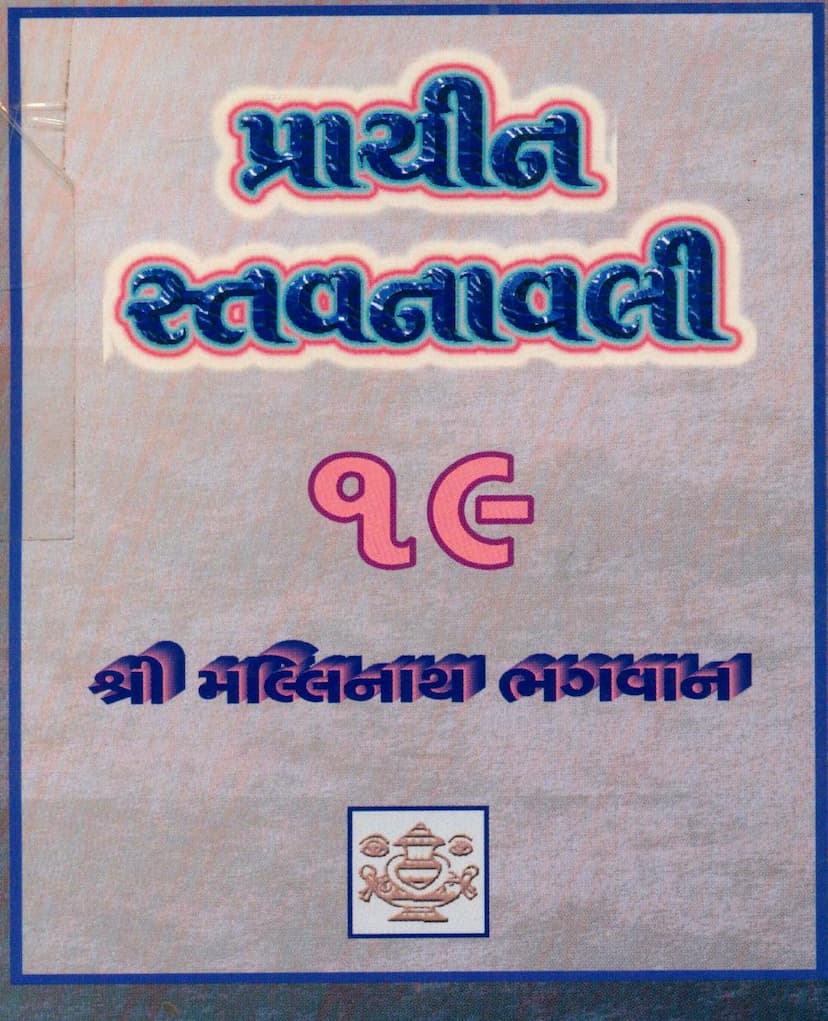Prachin Stavanavli 19 Mallinath
Added to library: September 2, 2025

Summary
Here's a comprehensive summary of the Jain text "Prachin Stavanavli 19 Mallinath" by Hasmukhbhai Chudgar, based on the provided pages:
This booklet, "Prachin Stavanavli 19 Mallinath," is a collection of devotional songs (stavan) dedicated to the 19th Tirthankar, Lord Mallinath. Published by Hasmukhbhai Chudgar, it aims to provide access to ancient stavan of various Tirthankaras, focusing on imparting the essence of devotion to the Supreme Soul (Paramatma) to help seekers achieve the state of liberation.
The text begins with a profound glorification of the Namokar Mahamantra, highlighting its significance as the essence of the fourteen Purvas. It emphasizes reciting this mantra in all circumstances – in happiness and sorrow, day and night, while living and dying, and throughout all companionships. The mantra is described as being recited by gods, demons, and all beings, and it is said to possess sixty-eight letters, offering sixty-eight virtues and siddhis (supernatural powers). The nine sacred entities (Nava Pad) within the mantra are said to bestow manifold wealth and alleviate suffering across lifetimes, leading to the ultimate state of Paramatma.
The introduction by Jagachchandra Suri emphasizes that through unwavering devotion, one can transcend external conditions and realize the Supreme Soul within. He states that the contributions of past great souls in the realm of devotion are compiled in this booklet, featuring nearly all accessible ancient stavan of each Tirthankar. The hope is that by savoring the essence of these stavan, readers will awaken their inner spiritual strength and move closer to liberation.
A message from Acharya Vijay Ramsurishwarji Maharaj Saheb (Dhelawala) further elaborates on the importance of true recognition of the Paramatma. He suggests that the lack of joy in daily worship stems from a superficial understanding. Realizing the Paramatma with authenticity, rather than merely following tradition, can make one filled with bliss. He contrasts the futility of shedding tears for worldly objects with the profound value of even a few tears shed in devotion, stating that such devotion brings one closer to spiritual freedom.
The booklet then presents a Table of Contents (Kukamanika) listing numerous stavan dedicated to Lord Mallinath, along with their respective composers. These composers include esteemed figures like Shri Padmavijayji, Shri Veervijayji, Shri Gyanvimalji, Shri Anandghanji, Shri Yashovijayji, Shri Bhanvijayji, and many others, each credited with specific stavan.
Following the Table of Contents, the booklet details Chaitryavandan Vidhi, outlining the ritualistic procedures for worship. This includes reciting specific mantras and sutras such as:
- Ichhami Khamasaman Sutra: A verse for seeking forgiveness and paying respect.
- Irriyavahiyam Sutra: For absolution of sins committed unintentionally while moving.
- Tassa Uttari Sutra: For further purification of remaining karmic residues.
- Annattha Sutra: Describing the sixteen acceptable conditions (agar) for maintaining the posture of meditation (Kaussarg).
- Logass Sutra: A prayer of praise for the 24 Tirthankaras, culminating in a wish for spiritual attainment.
- Namosthuṇam Sutra: An extensive prayer glorifying the attributes of the Arihants.
- Javant Cheiyai Sutra: A verse to salute all Jin statues in the three worlds.
- Javant Kevi Sahu Sutra: A verse to offer salutations to all Jain monks and nuns across the three continents.
- Namo'rhasiddhacharyopadhyayasarvasadhubhyah: A salutation to the five supreme beings (Panch Parmeshthi).
- Jay Virayray Sutra: A prayer for auspiciousness and liberation.
- Arihantcheiyāṇuṁ Sutra: A verse to honor the deities in the temple.
- Annattha Sutra (again): Reiterating the conditions for Kaussarg.
- Namo'rhasiddhacharyopadhyayasarvasadhubhyah (again): Reconfirming the salutation to Panch Parmeshthi.
The majority of the booklet then features the individual stavan of Lord Mallinath, each attributed to its composer. These stavan describe various aspects of Lord Mallinath's life, his virtues, and the devotional sentiments of the composers. They narrate his birth in Mithila, his parentage, his divine attributes, his renunciation, his sermon, and his eventual liberation. The stavan are rich in poetic descriptions and expressions of love and reverence for the Tirthankar. Many stavan highlight his divine form, his compassion, and his role as a guide to liberation.
The stavan collectively portray:
- His divine birth and parentage: Mentioning his father Kumbha Raja and mother Prabhawati, and his birthplace Mithila.
- His physical attributes: Describing his blue complexion, his height of 25 Dhanush, and his auspicious insignia (Lanchhan) of a Kalash.
- His spiritual journey: His renunciation, his period of asceticism, and his attainment of Keval Gyan (omniscience).
- His teachings and compassion: His ability to pacify the six kings who came to marry him, his compassionate nature, and his role in guiding beings out of the cycle of birth and death.
- Devotional expressions: The composers express their deep reverence, their longing for his darshan (sight), and their desire to emulate his virtues.
- Philosophical insights: Some stavan delve into the principles of Jain philosophy, such as the nature of the soul, the karma theory, and the path to liberation.
The booklet concludes with a quote from Acharya Shri Bhuvanbhanusurishwarji Maharaj, emphasizing the importance of gratitude and unwavering devotion to the Tirthankaras. He highlights that the devotion shown to the Arhats is the key to spiritual progress and that true liberation is achieved through deep reverence and becoming "mad" for the Paramatma. He also stresses the importance of maintaining this devotional fervor throughout one's life.
In essence, "Prachin Stavanavli 19 Mallinath" is a devotional compilation that serves as a guide for Jain followers to connect with and revere Lord Mallinath through ancient, soul-stirring devotional songs and prescribed rituals. It aims to foster spiritual growth and ultimately lead to the attainment of liberation.